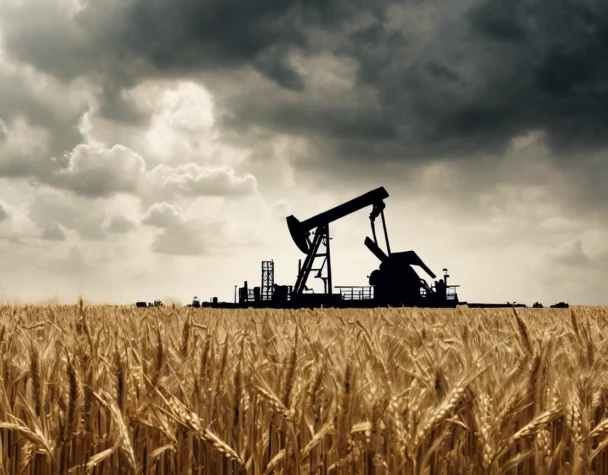
Oil Prices Sink and Crop Futures Diverge as Supply Tensions and Trade Fears Intensify
Mon, May 05, 2025Crude Oil Slides as OPEC+ Boosts Output Amid Slowing Demand
Oil prices are under pressure following OPEC+’s decision to ramp up production starting June 2025. Brent crude dropped over 3% to $59.25 per barrel, and West Texas Intermediate (WTI) sank to $56.19, hitting their lowest levels in over a month. The group’s commitment to increasing daily output by 411,000 barrels is adding oversupply fears to a market already impacted by tepid global demand.
Saudi Arabia is reportedly pushing for stricter compliance among OPEC+ members like Iraq and Kazakhstan, whose overproduction has frustrated efforts to stabilize prices. These internal dynamics, along with the group’s policy shift, have triggered broader uncertainty in energy markets. Traders are also watching Chinese oil demand closely, which remains subdued due to manufacturing slowdowns and slower-than-expected GDP growth.
This bearish momentum in oil is expected to persist unless global consumption sees a marked recovery. For further details on OPEC+’s decision and its implications, refer to Reuters’ latest energy update.
Speculators Shift Stance in Agricultural Markets
In the agricultural space, commodities are showing diverging trends. Sugar prices have been declining since late 2023, pressured by favorable harvests and reduced ethanol production incentives in Brazil. This trend is exacerbated by long-standing government subsidies and policies that continue to distort market fundamentals.
Grain markets are seeing a notable shift in speculative behavior. Hedge funds and money managers are now holding their most bearish positions in wheat futures in over two years. At the same time, there has been a retreat from long positions in corn, suggesting weakening confidence in near-term price gains. These developments point to a recalibration of expectations in the face of strong crop yields and easing export demand.
According to Reuters, this divergence reflects broader uncertainty in the agricultural sector, with traders bracing for both weather risks and geopolitical shocks that could upend supply chains.
World Bank Sees Broad Price Decline and Economic Ripple Effects
Adding to the downward pressure, the World Bank has forecast that overall commodity prices will fall 12% in 2025 and another 5% in 2026, returning to levels last seen in 2020. This projection is rooted in slowing global growth, persistent trade conflicts, and rising protectionist measures that may stifle cross-border flows. For commodity-exporting countries, particularly in the developing world, these declines could spell budgetary strain and increased economic vulnerability.
For full insights from the World Bank’s Commodity Markets Outlook, see the Reuters article on projected price trends.
With oil volatility, speculative grain activity, and geopolitical uncertainty reshaping trade flows, investors should prepare for continued fluctuations across energy and agricultural assets.

